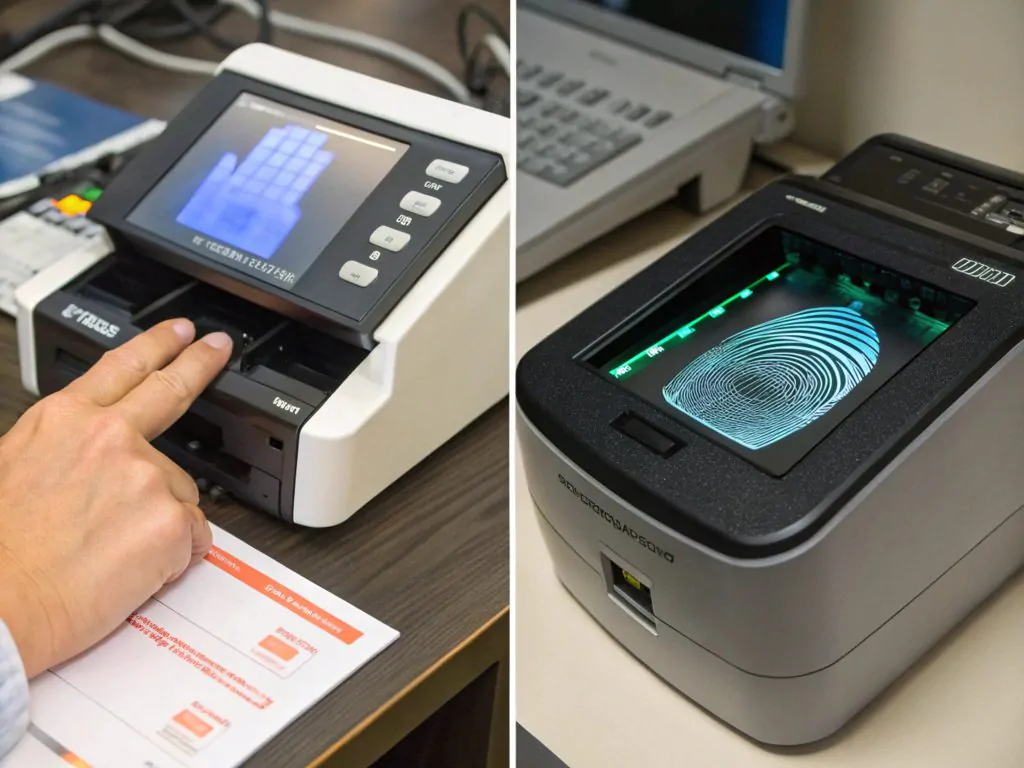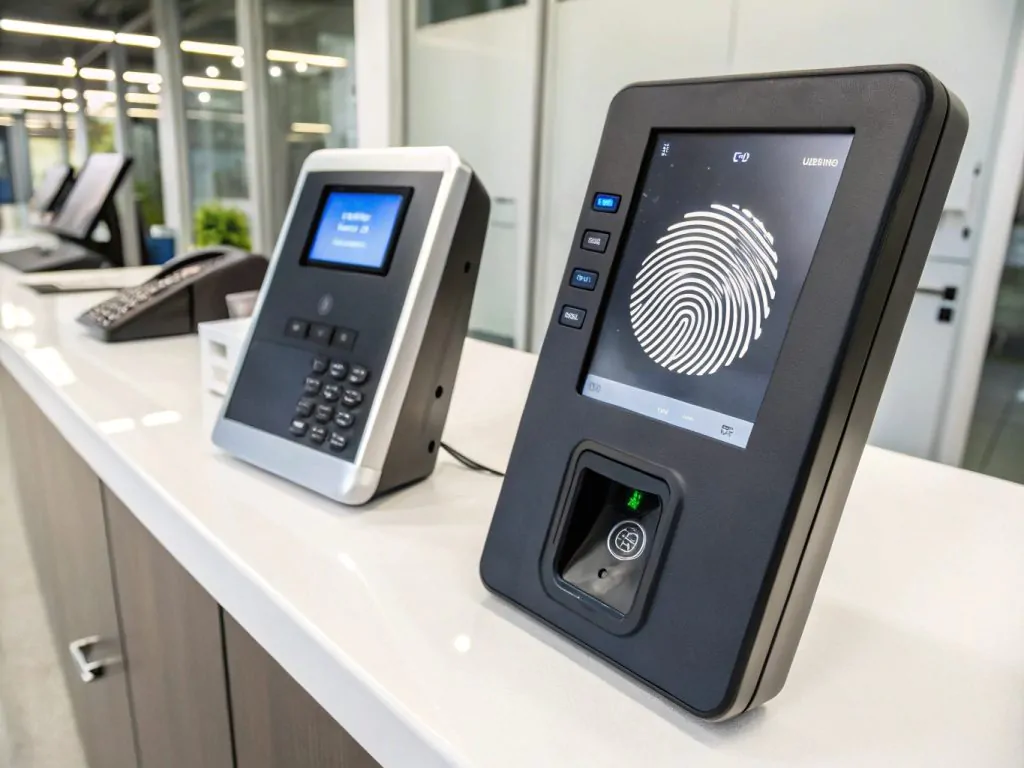Fingerprint scanning is becoming more common, but choosing between traditional fingerprint systems and newer biometric ones can be confusing. Which is safer, and which one should you trust? Let’s break down these two systems to understand their differences and the safety of each.
Traditional fingerprint recognition systems use optical technology, while biometric fingerprint scanners like capacitive and ultrasonic models offer higher security by analyzing deeper skin layers. Biometric scanners are harder to spoof and more reliable.
Now, let’s dive deeper into the differences in accuracy, cost, and usability between these two fingerprint technologies.
What Are the Primary Differences Between Fingerprint and Finger Scan Biometric Systems?
Traditional fingerprint systems and biometric scanners may seem similar, but they work in fundamentally different ways. Let’s explore these differences in detail.
Traditional fingerprint recognition uses optical technology, which captures light-based images, while biometric scanners use capacitive or ultrasonic methods that analyze deeper skin characteristics for greater security.

Traditional fingerprint recognition systems are more vulnerable to factors like dirt, moisture, and wear. These systems use optical sensors that capture the fingerprint image by reflecting light. However, they can struggle with accuracy under certain conditions, such as dirty fingers or worn-out scanners
On the other hand, biometric fingerprint scanners use more advanced technologies like capacitive and ultrasonic scanning. Capacitive scanners use electrical currents to map the fingerprint, while ultrasonic scanners generate sound waves to create a 3D model. These methods provide greater accuracy and are harder to fool, as they analyze the fingerprint at a deeper level, detecting the ridges, pores, and skin texture, which makes replication much harder.
Types of Fingerprint Scanners
| Type | Technology Used | Pros | Cons |
|---|---|---|---|
| Optical Scanners | Light Reflection | Low cost, widely available | Vulnerable to dirt, moisture, and wear |
| Capacitive Scanners | Electrical Currents | More accurate, resistant to moisture | Higher cost, may require maintenance |
| Ultrasonic Scanners | Sound Waves for 3D Mapping | Highly secure, detailed fingerprint mapping | Expensive, complex technology |
What Is the Difference Between Biometrics and Traditional Authentication Methods?
Fingerprint biometrics are part of a growing trend towards more secure, user-friendly authentication methods. But how do they compare to traditional methods like passwords or PINs?
Biometrics rely on physical traits for identity verification, making them more secure than traditional methods like passwords or PINs, which are easier to steal or guess.
Traditional authentication methods, like passwords or PIN codes, have been around for decades, but they come with significant vulnerabilities. Passwords can be forgotten, hacked, or stolen through phishing or social engineering. The same goes for PINs—they can be easily guessed or observed.
In contrast, biometric authentication systems are based on unique physical characteristics that are much harder to replicate. Fingerprint biometrics, for example, are incredibly secure because they are linked to something you are, not something you know. This shift towards biometric security is why it’s quickly replacing traditional methods in many areas, from smartphones to banking apps.
What Is the Difference Between Facial Recognition and Fingerprint Biometrics?
While both facial recognition and fingerprint biometrics are forms of biometric security, they operate very differently. So, which one is better for you?
Fingerprint biometrics are more secure than facial recognition as they require physical contact and are harder to spoof, while facial recognition can be fooled with photos or videos.
Facial recognition is often used in areas where contactless identification is preferred, such as public spaces or airport security. However, it has its flaws. The technology can be tricked by photos, videos, or 3D models of a face. Also, lighting conditions can affect accuracy, making it less reliable in certain situations.
On the other hand, fingerprint biometrics require physical contact, which some might see as a disadvantage. However, this makes fingerprint recognition much harder to spoof. It’s a more secure and reliable method for identifying individuals, especially in environments where high security is needed.
What Are the Different Types of Fingerprint Scanners?
There are several types of fingerprint scanners on the market today, each offering unique benefits. Let’s break them down.
The main types of fingerprint scanners are optical, capacitive, and ultrasonic, with each offering varying levels of accuracy and security.
Optical Fingerprint Scanners
Optical fingerprint scanners are the most common, primarily due to their low cost. They work by capturing an image of the fingerprint using light. While they’re widely available, they are more vulnerable to dirt, moisture, and wear, making them less reliable over time.
Capacitive Fingerprint Scanners
Capacitive scanners are more accurate than optical ones because they use electrical currents to map the fingerprint. They are also resistant to dirt and moisture, which gives them an edge in terms of reliability. These scanners are commonly found in modern smartphones, such as those from Apple and Samsung.
Ultrasonic Fingerprint Scanners
Ultrasonic scanners provide the highest level of security by using sound waves to create a 3D map of the fingerprint. They are incredibly accurate and can even work with wet fingers, making them ideal for high-security applications. However, they tend to be more expensive and are not as widely used in consumer devices as capacitive scanners.
Conclusion
Fingerprint biometrics provide a more secure and reliable solution compared to traditional methods. With advancements in capacitive and ultrasonic technologies, biometric scanners are becoming the go-to choice for high-security applications, providing better protection for sensitive information.
Capacitive fingerprint scanners[^1]
Ultrasonic fingerprint scanners[^2]
Biometric authentication systems[^3]
[^1]: Explore how capacitive fingerprint scanners offer enhanced security and accuracy in biometric authentication systems.
[^2]: Discover the cutting-edge technology behind ultrasonic fingerprint scanners and their superior performance in various conditions.
[^3]: Stay updated on the latest advancements and trends in biometric authentication systems for improved security measures.



